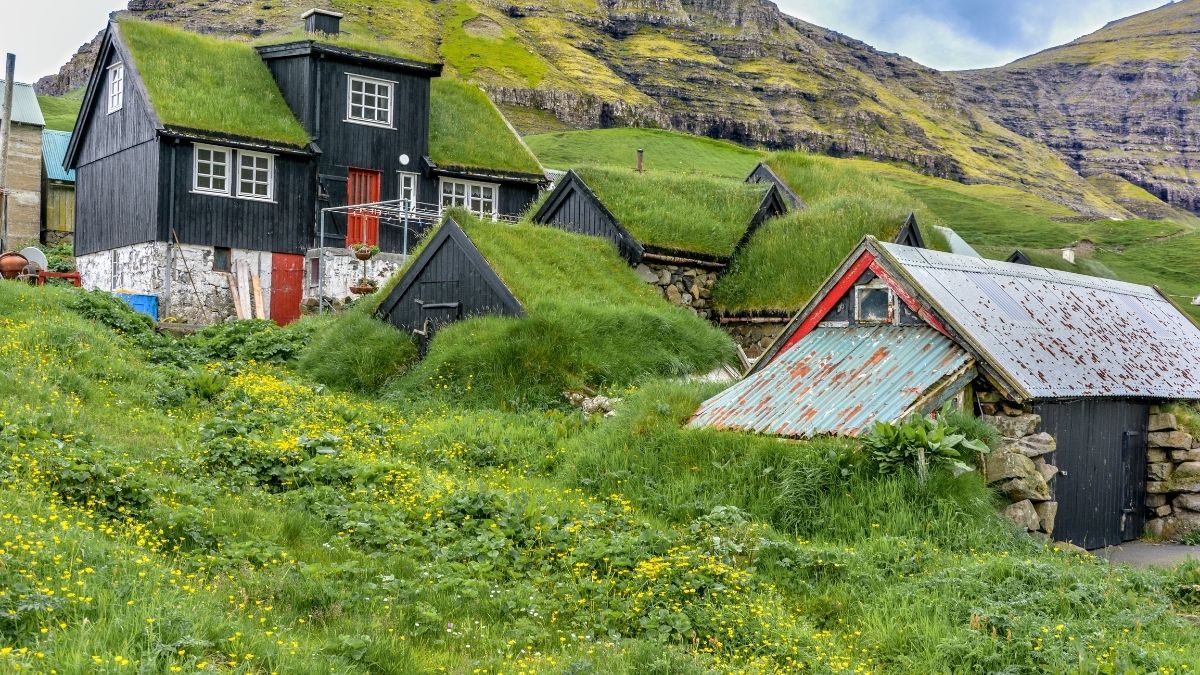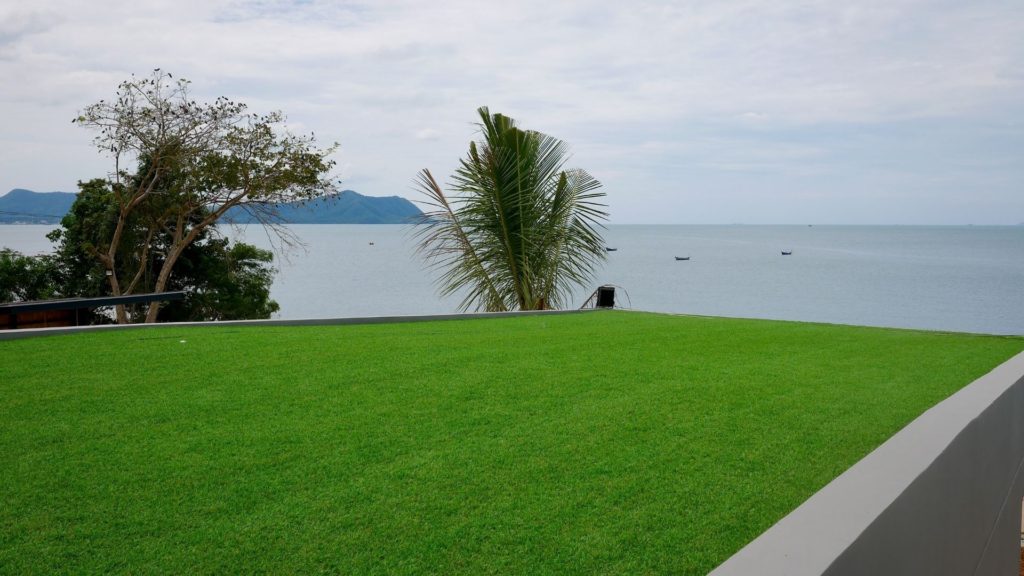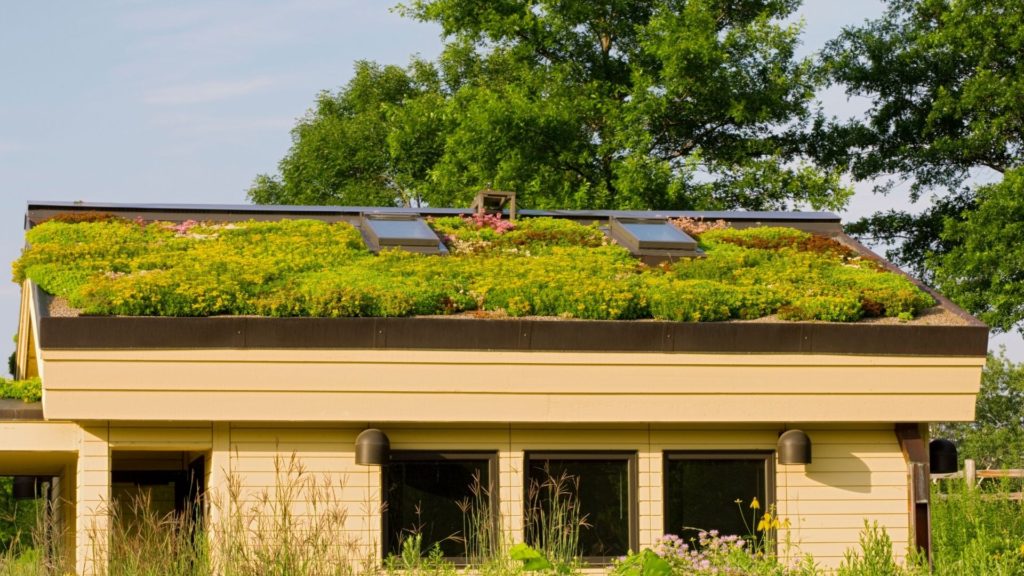Green roofs or Eco roofs have become the latest design trend in almost all buildings. A green roof, also known as a living roof, is a building’s roof that is covered in vegetation and a growing medium. This is because of its wide variety of benefits ranging from energy conservation to carbon sequestration.
In this blog, I will show you the full details about green roofs, their types, components, merits and demerits. By the end of this article, you would be planning to install a green roof in your home or office. Ready for the journey through green roofs?
What are Green Roofs?
A green roof, also known as a living roof, is a building’s roof that is covered in vegetation and a growing medium. This is planted over a waterproofing membrane. Additional layers, such as a root barrier, drainage, and irrigation systems, can be used. Green roofs with rooftop ponds are another form of green roof that is used to treat grey water.
Different Types of Green Roofs
Green roofs are also known as living roofs, grass roofs, and sedum roofs, but all of these terms apply to the same thing. There are three types of green roofs to consider when it comes to your options. Let me walk you through the features of each one of them.
Also Read : Green walls – Types and advantages
Extensive Green roofs
- Extensive green roofs are a common choice among homeowners.
- They are light, low-maintenance, and do not need additional watering unless there is a prolonged drought.
- They can be used on flat roof of both current and new roof decks.
- An attractive low layer of vegetation, about 80-150mm thick, such as grass, moss, sedum, or small flowers, is usually found on extensive green roofs.
Intensive Green Roofs
- Intensive green roofs are designed to accommodate larger plants having a height of around 8-12 inches, such as bushes and small trees, as well as a broader range of plants.
- They are often referred to as roof gardens.
- To sustain this much thicker vegetation layer, they need a layer of rising medium/soil.
- They’re more popular in larger commercial ventures, such as parks and gardens.
- Intensive roofs necessitate a much deeper substrate to be set up, which means more weight to carry as well as irrigation requirements.
Semi-extensive Green roofs
Semi-intensive roofs are combinations of both extensive and intensive green roofs. They can combine the environmental benefits of green top and functions as a roof garden.
Let me show you the components of a green roof.
Green Roof System Components
You must install a green roof system for a green roof to develop and prosper. A green roof system is made up of many layers, which are as follows:
- Waterproofed roof deck
- Root-barrier security
- Membrane for Drainage
- Geotextile filter / filter layer
- Substrate / growing medium for green roofs
- Plants and trees
Let’s take a look at each one separately:
Waterproofed roof deck
Your roof deck may already have a waterproofing layer since waterproofing is an important part of the structure’s protection. If not a bitumen membrane or coating, asphalt on a shed, or any kind of liquid waterproofing may be used.
Also Read : Types of water proofing – 5 methods explained
Root barrier
- To avoid any roots from causing damage to the structure, a root barrier should be installed above the primary waterproofing layer.
- There are typically thin polyethylene plastic membranes.
- They are spread over the waterproofing layer and taped together.
- Root barriers are imperative in intensive roofs due to the potential for more woody and robust roots.
Membranes for Waterproof Drainage
- Rain and stormwater are dealt with by the drainage layer of a green roof system.
- It allows water to safely flow away from the roof into guttering and downpipes.
- It protects the structure as well as the plants from saturation and root damage by coping with excess water.
- The stud profile on these green roof drainage membranes helps to ensure proper drainage.
Filter Layer
The filter layer on a green roof is intended to keep dirt, other substrates, and debris from filling the drainage membrane’s cavities.
Growing Substrate
The substrate should be light, helps with drainage but is still absorbent enough to maintain enough water to sustain your plants’ growth. The commonly used substrates are:
- Bricks
- Aggregates
- Compost
- Medium clay soils
- Volcanic rocks such as lava and pumice
All of them offers the advantage of being all-natural and environmentally friendly.
Green Roof Advantages
- Green roofing has a longer life since a green coating protects it from UV radiation, snow, and ice.
- The roofing will last two to three times longer than a conventional roof because it will not be exposed to extreme high and low temperatures.
- It will be comfortable and cool inside during the summer and comfortably warm during the winter.
- Energy costs will be reduced as a result of the lower HVAC energy demands.
- The green roof especially the substratum absorbs both impact and environmental noise, such as rain and hail.
- Some of the invisible pollution and particles are filtered out of the air by plants.
- The pollution level in the air above gardens and parks is up to 80% lower than in the rest of the city.
- The vegetation layer, the substratum, and the irrigation layer filter and absorb 30 to 50 percent of rainwater, resulting in far less water in the sewage system.
- Green roofs help to increase the city’s fauna, such as butterflies, pollinating insects, and birds, among other things.
Green Roof Disadvantages
There are only a few drawbacks, the most significant of which is the installation cost. A green roof may cost more to build than a conventional flat roof since the underlying structure will need to be reinforced to handle the additional load.
That’s it about green roofs. Hope this blog motivated you to set up a green roof in your building. Let’s go green. Let’s adopt green roofs.




Comments are closed.